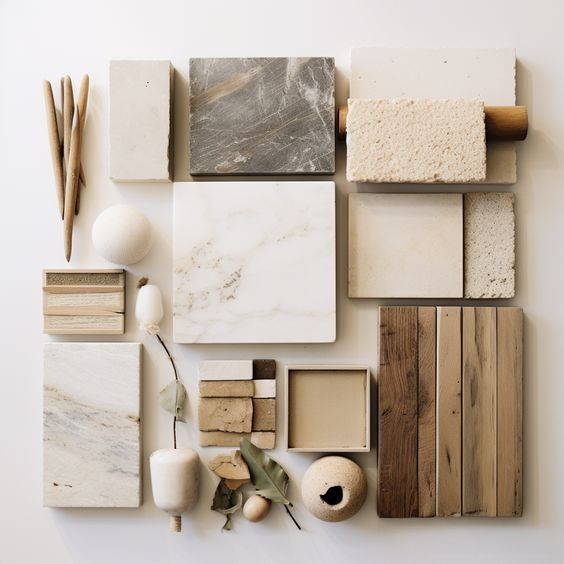In construction, various types of materials are used for interior covering of floors, walls, and ceilings. The choice of materials depends on needs, preferences, and budget. Below are some of the most common materials:
Flooring:
1. Tiles and ceramics: Resistant to moisture and wear, suitable for bathrooms, kitchens, and high-traffic areas.
2. Hardwood: Beautiful and warm, suitable for living rooms and bedrooms.
3. Laminate: A cost-effective alternative to hardwood, easy to install.
4. Vinyl: Water-resistant, suitable for kitchens and bathrooms, available in a wide range of designs.
5. Carpet: Warm and soft, suitable for bedrooms and living rooms.
6. Marble: Beautiful and luxurious, suitable for entrances and reception rooms.
7. Terrazzo: A mixture of fine stones and cement, durable and attractive, suitable for public and commercial spaces.
8. Concrete: Industrial and modern, customizable with color and polish, suitable for contemporary spaces.
9. Parquet: A type of wooden flooring, warm and beautiful, suitable for living rooms and bedrooms.
Walls:
1. Paint: Wide range of colors and textures available.
2. Wallpaper: Various designs and textures, quick decoration change.
3. Wood: Creates warmth and nature feel, suitable for rustic and traditional decorations.
4. Stone: Natural beauty, high resistance, suitable for interior facades and fireplaces.
5. Wooden or MDF panels: For decorative walls and dividers.
6. 3D panels: For creating texture and visual depth, suitable for accent walls.
7. Brick: Natural and rustic texture, suitable for traditional and industrial decorations.
8. Glass: For creating open and bright spaces, suitable for dividers and interior walls.
9. Metal: Use of metal sheets for creating modern and industrial walls.
Ceilings:
1. Plaster: The most common material, customizable with color and design.
2. Ceiling tiles: For easy access to utilities above the ceiling, suitable for offices and commercial spaces.
3. Wood: Creates warmth and beauty, suitable for rustic or traditional-style homes.
4. Virtual sky: For creating natural images and serene views on the ceiling.
5. Acoustic panels: For sound control in cinemas, studios, and conference rooms.
6. False ceilings: For concealing utilities and creating empty space for insulation and lighting.
7. Wood: For sloped or vaulted ceilings, creates warmth and beauty.
8. Polycarbonate or glass: For creating natural light in interior spaces, suitable for terrace or secluded courtyard ceilings.
9. Fiberglass or PVC: For false ceilings in moist areas such as bathrooms and kitchens.
The choice of materials should be based on the usage of the space, traffic levels, climate conditions, budget, and personal preferences.




No comment